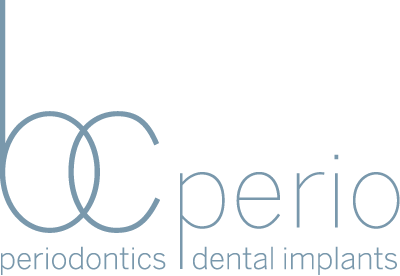Gum disease is a preventable condition, so you can take steps to minimize your risk of this issue. However, if you develop gum recession, it’s important to consult with a periodontist so that you can get treatment and avoid the more severe consequences that occur as gum disease develops unchecked.
How Gum Recession Develops
Gum recession develops as a result of gum disease, which is a progressive condition of inflammation in the gum tissue that occurs in stages. The earliest stage, gingivitis, is marked by fairly mild symptoms, including:
- Redness in the gum tissue
- Swelling of the gums
- Bleeding in the gums (even if it only occurs while brushing and flossing)
The next stage of gum disease, periodontitis, is associated with more severe symptoms, including gum recession. The inflammation in the gum tissue causes that tissue to shrink and pull upward from the top of the tooth.
Causes of Gum Disease
Gum disease is caused when oral bacteria attack the gum tissue and cause inflammation. The condition most often is a result of poor oral hygiene and can be influenced by the following factors:
- Inadequate oral hygiene practices
- Lack of consistent routine dental care (cleanings and exams)
- Poor diet
- Misaligned teeth
Other factors that can affect gum disease include:
- Hormonal changes in women, especially during pregnancy
- Genetics
- Dry mouth (often a side effect of prescription medications)
Treating Receding Gums
There are many reasons to pursue treatment for receding gums. This symptom has an unsightly affect on your smile, in addition to putting your oral health at risk. Therefore, if you have receding gums, you should consult with a periodontist to get treatment.
Gum recession treatment typically involves a surgical gum graft in which the periodontist takes gum tissue from a donor source, either the gums in the vicinity of the graft or from the palate, and inserts it at the site of gum recession.
After you receive initial treatment for receding gums, it’s essential to follow up as directed. When you check in with your periodontist regularly, you’ll be taking an important step to reduce your chances of a relapse.
If you are experiencing receding gums, call our team at BC Perio to schedule an evaluation.
